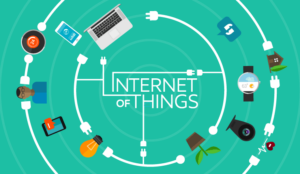Alex Black of Enghouse Interactive discusses how many businesses are now focused on optimising the customer journey through the use of collaboration tools.
It is now commonplace for an organisation to map out the way customers interact with them and their typical process of “flowing through the organisation”. They then look at how they can best streamline that process in order to improve the customer experience.
With the customer journey continuing to become ever more important to organisations over time, more businesses are handling more of the routine or predictable interactions they have with customers through self-service or automated channels.
Remaining queries and interactions tend to be complex or awkward, often requiring the involvement of multiple parties to resolve. That is why we are seeing growing numbers of organisations making more active use of remote access or mobile technologies and putting in place collaboration environments like ‘sandpits’ or ‘boxes’, where several people can join forces to work on the same issue.
According to a recent report, Productivity, the digital workplace & the collaboration conundrum by Dr. Nicola J Millard, Head of Customer Insight and Futures at BT, 9 in 10 business executives say mobile and collaboration technologies have improved the productivity of their workplace.
Reaching out Across the Enterprise
We are now seeing this focus on collaboration positively impact many different areas of customer service.
Take car insurance as an example. If the renewal or new policy request ticks a number of standard boxes, the process is straightforward and can be handled entirely in the front office by the customer service agent. If it is more complex, however, and the car needs to be insured immediately, it may need the involvement of actuaries in the middle office. More complex still, and it is likely to be referred to the back office where underwriters will need to work on it.
Using a traditional communications approach, this is likely to be a long-winded and protracted process, potentially involving multiple interactions with the customer, and inevitable delay and frustration.
Moving forwards, the key to resolving these issues lies in businesses integrating the contact centre environment at the heart of their communications approach with the latest collaboration tools, most notably including Microsoft Teams.
Applications like Teams effectively allow organisations to extend the contact centre from the frontline agent into the middle and back offices, enabling them in turn to streamline the business process and improve the customer experience into the bargain.
The tool combines workplace chat, video meetings, file storage, and application integration to deliver a powerful collaboration environment.
In the car insurance example above, an agent could potentially use it to get almost instant access to relevant people in the middle and back offices and complete the customer’s policy renewal while they are still on the phone.
Benefits for All
In contrast to the alternatives like email and traditional voice telephony, these kinds of collaboration hubs offer a highly fluid means of communications, ideally suited to customer-facing businesses who want to build a highly responsive; interactive and productive customer service environment.
The core concept of Microsoft Teams, for example, is around bringing everything – from people to conversations, content and tools – together. Users can share assets like calendars, files and emails in real time. Moreover, because tools like this are typically cloud-based, it is easy for anyone to access them wherever they are in the world and whatever device they are using.
With the latest collaboration tools, delivering support for mobile devices is becoming increasingly seamless. Going back to the earlier car insurance example, an assessor could share photographic evidence of a damaged car, taken on their iPhone, with the head office team, together with explanatory notes, in near real time to help inform a policy claim or renewal.
All this capability helps make the customer service team much happier, of course. It reduces friction in the process and agents have the peace of mind of knowing that they can draw on the expertise of the wider team and through the latest collaborative technology get relevant information back to the customer faster. And the old saying; “The happier the agent, the happier the customer,” continues to hold true.

Alex Black
In today’s complex customer interaction environment, collaboration is key to delivering the best possible customer experience.
Thanks to the emergence of the latest communications hub-based technologies, that kind of collaboration is increasingly within the reach of most businesses today.
Author: Rachael Trickey
Published On: 10th Jun 2019 - Last modified: 11th Jun 2019
Read more about - Guest Blogs, Enghouse Interactive





































